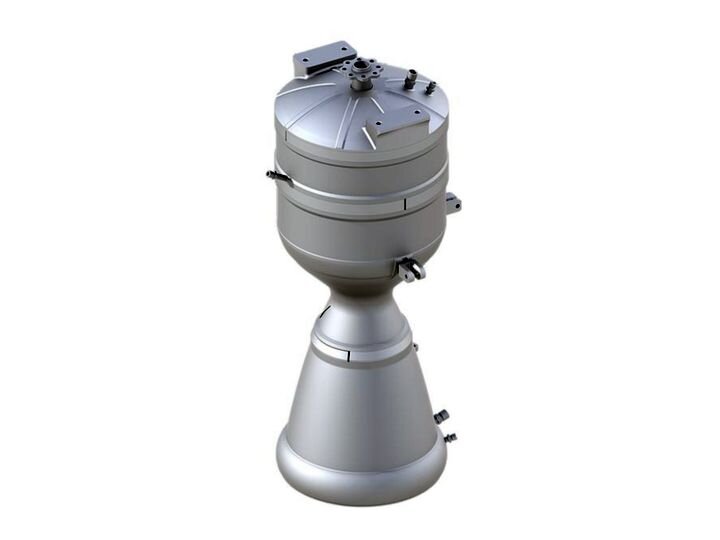![3D printed metal rocket engine for the SK-1 vehicle [Source: Skyrora]](https://fabbaloo.com/wp-content/uploads/2020/05/image-asset_img_5eb05092d1f3d.jpg)
Skyrora has designed and now tested a 3D printed rocket engine.
The Edinburgh-based operation has been developing what they call an “eco rocket” for several years. It’s “eco” because its design produces far less greenhouse gas than conventional rocket mixtures.
The key to their chemistry seems to be the use of a kerosene fuel that’s been developed from waste materials. This fuel, called “Ecosene”, is made in only 24 hours by processing “certain waste plastics”. From one tonne of waste, they can produce 600kg of Ecosene fuel.
As the oxidizer in the rocket — because fuel must always have an oxidizer — they have chosen to use hydrogen peroxide. This is the same oxidizer used in the German V2 rocket during WWII. The advantage in using hydrogen peroxide is that it is a stable liquid in a wide range of temperatures, unlike other oxidizers, like liquid oxygen, which must be kept at very frosty temperatures. Maintaining liquid hydrogen peroxide is a simple matter.
3D Printed Rocket Engine
The engine for the Skyrora SK-1 is designers to handle these materials, and it turns out is entirely 3D printed. This is quite advantageous for rocket engines, which typically have tiny cooling channels built into the engine bell, which are extraordinarily difficult to manufacture using conventional methods. This has resulted in Skyrora having a rocket engine with far fewer parts.
Fewer parts not only means it’s less expensive to assemble, but it’s also lighter weight: there is less need for bolts, nuts and lugs to hold pieces together. Finally, the engine should be more reliable because there are fewer seams to act as points of failure.
In the past few weeks Skyrora has been actively testing the first engines made using this technique and they were successful. Skyrora fired the engines for a series of 30 second tests without error.
This is an outstanding example of how 3D printing technology can enable designs not previously possible. And in this case, it allows a startup company to launch satellites to 500km orbits.
Via Space Daily and Skyrora

